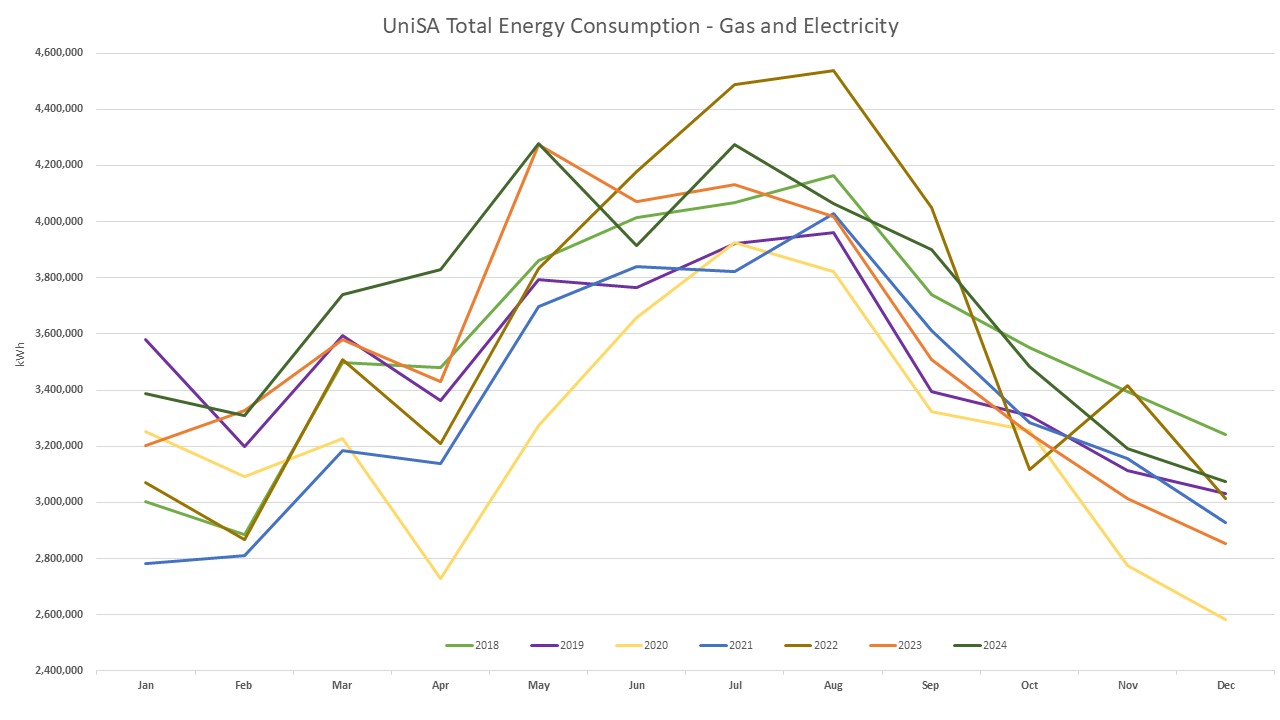Energy Management
FMU actively monitors energy consumption across the University and has implemented a range of strategies to reduce both consumption and the resultant carbon emission impact. Recent strategies have included:
- Adjusting the set point temperatures of all heating and cooling
- Increasing the reliance on 'push button' controls for heating and cooling
- Reducing the number of gas hot water heaters in active service
- Ensuring fume cupboard sash alarms are active and activation times are appropriately calibrated
- Reviewing our ability to increase reliance on renewable energy sources
- Replacing old lighting systems with LED comparative systems

Year on Year Comparison of Energy Consumption
*The increased consumption in 2022 was heavily influenced by the change from 'push button' ventilation controls to ongoing/constant ventilation in response to COVID-19.
*Total consumption expanded in 2018 due to the completion and occupation of the Bradley Building and Pridham Hall.
Please contact us if you would like more information on individual campus of building energy consumption.
What can I do to help?
Check out the links below or send us your ideas.
- Lower sash height whenever possible
- Identify which cupboards can be switched off safely when not in use
- Prepare equipment before switching on the fume cupboard
- Complete non-hazardous processes on the bench to reduce running time
- Avoid using fume cupboards as chemical stores wherever possible
- Switch off the lights in common areas when no one is present
- Switch off your office lights when you leave your office; particularly if it is well lit by natural light
- Switch off your monitors when you leave your office for more than 15 minutes
- Where possible, put your computer into 'sleep' mode when not in use
- Switch off general equipment that is not in use. This mat include incubators, centrifuges, microscopes, analytical equipment, sterilisers and ovens
- Ensure all items with a heating function e.g. heating blocks, microscopes, PCR machines, water basins are switched off when not in active use
- Use curtains and blinds effectively
- Set your heater/cooler to a set point that is as close as possible to the ambient temperature, while still being comfortable
- Set your cooler no lower than 24 degrees and heater no higher than 20 degrees (every additional degree lower/higher uses an additional 10% of energy)
